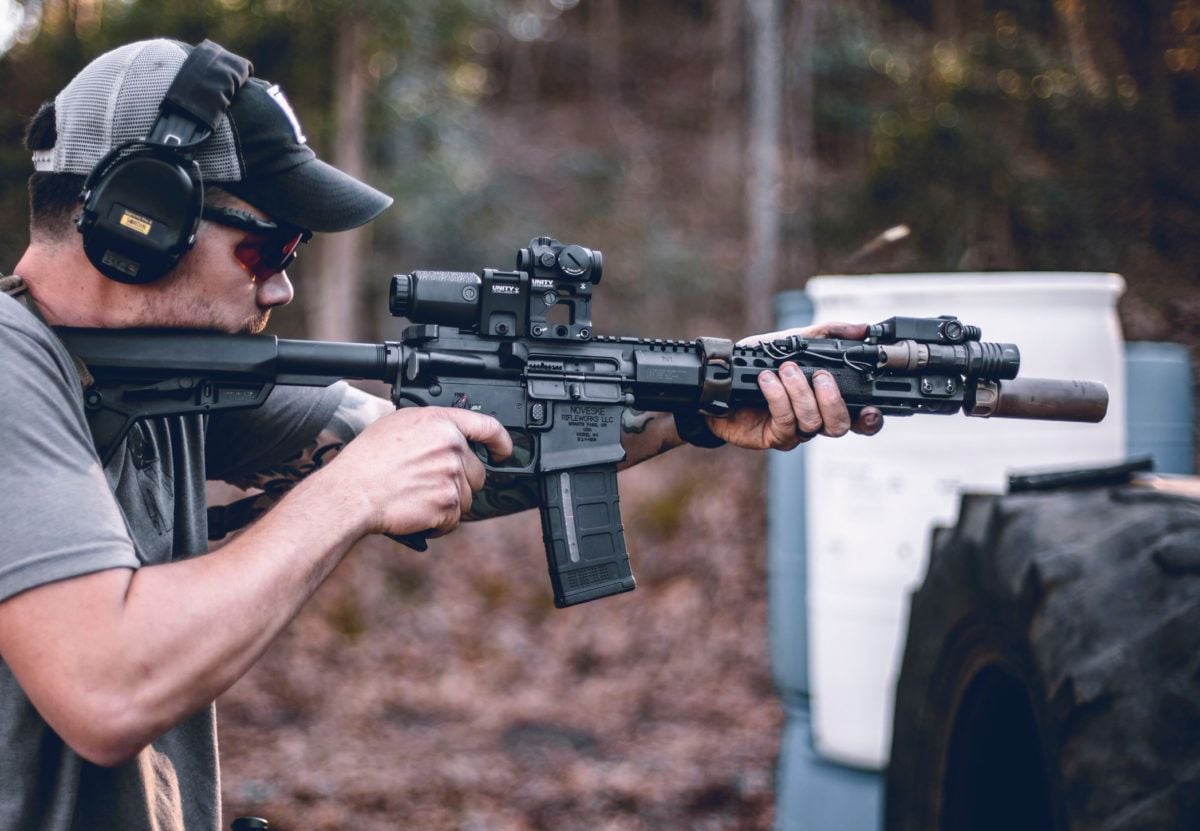
If you are in the market for a new scope mount, you may have noticed the trend towards high scope mounts for red dot optics and LPVOs. I’ll admit to some personal confusion about the “why” behind these mounts and what I should choose for my rifles. To get a better understanding of high scope mounts for the AR platform, I reached out to Mark Smith of JBS Training Group.
Q: My household has had a lot of back and forth about the validity of high scope mounts for the AR platform. Are these high scope mounts useful, are they a fad, or is it something in between?
Mark Smith, JBS Training Group – Are they a fad? I think anything new that people attach to can be a fad for a while. That said, there are very few things that have remained solid and consistent throughout my life. I change my mind. Optic heights are one of those things I have changed my mind on.
I have been a co-witness guy for red dots and LPVOs. I have then been a lower 1/3 guy. At the time, I did not know why I wanted a lower 1/3 mount other than the fact that everyone else was using them. Then, the high mounts came out. I remember specifically when Jason Falla unveiled the Skyscraper mount for Knight’s Armament at SHOT Show.
Q: That was something I remember well, also. In that video, a selling point with the high scope mount was that it made him very slightly faster. Still, my thought was that this must be a niche item for a particular circumstance, and that there would be downsides to having a mount that high.
Mark Smith, JBS Training Group – In full disclosure, I do not remember the exact details of what he said, but I will say that in specific environments, with certain objectives, certain things can happen to give you a fraction of a second advantage. That’s always good, as bullets travel at fractions of a second, and I want all of the advantages.
More than the speed, though, what I recall was that these tall mounts were designed around the idea of gas masks and NODs. That was the big push. Once I actually got a high scope mount and got experience with it, I began to see other benefits that were not being marketed or discussed as much.
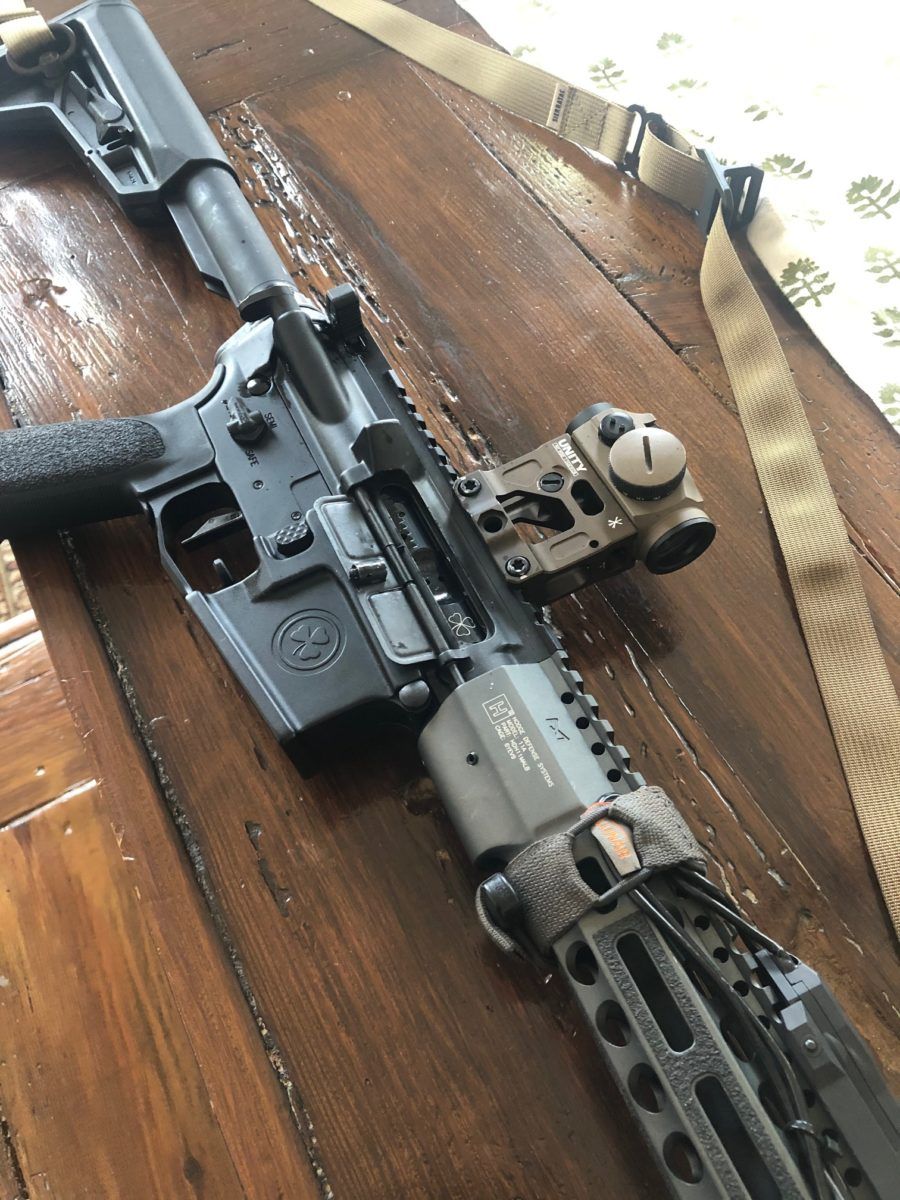
So, let’s talk 1.93 and up. We’ve got 1.93 high scope mounts, and things like the KAC Skyscraper, the Unity Tactical FAST mount. Also, you had a 5/8″ riser with an EOTech EXPS3…that was the thing for a while, but nobody really knew why, but they knew that they liked it. They weren’t stupid, they just weren’t sure why they liked it.
I liked it, and I wasn’t sure why I liked it. So, I started to think about it, and number one, it helped me to hold my head up like it was naturally sitting on top of my shoulders. I had no need to crane my neck or flatten my face down whatsoever when using a mount that high. It’s a really neat thing. It just feels better and is a more natural thing for me.
I noticed that shooting on the move became more comfortable with the high scope mount. To be honest with you, I am not exactly sure why that is. Other than I feel like when we pick our head off the stock a little bit, we can see a little bit better…It’s a bit like running a visible laser in a shoot house. Nothing is impeding my vision. I’m not looking through a tube. I am literally looking at the room as if I were just to walk through it. If I can do that with a laser with nothing in my field of view, I prefer it drastically versus looking through an optic. I feel like maybe there’s something to this that carries over to the high mounts.
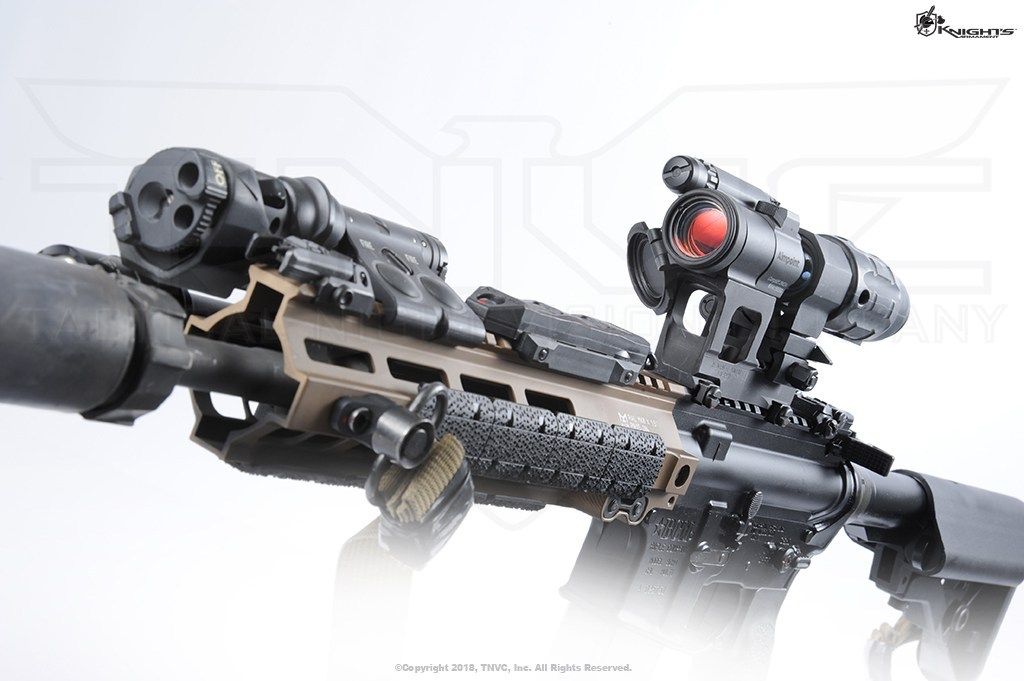
With a high scope mount, my head is up. I am looking at my environment the way I would typically look at it, not face down on a stock, looking from the top of my eye sockets, from my brow, so to speak. It’s just a more natural way to look.
I also noticed that the gun coming to the eye was generally a touch faster. If you watch someone with a co-witness mount…when they mount the gun, the gun comes up to the shoulder, and then their head goes down to the gun. It’s two separate motions.
When you have a mount that allows you to shoot with your head straight up, there is none of that. You don’t have to move to the optic now. The optic can get to you sooner. Now, by sooner, I mean perhaps only 2/10th of a second, but that’s “way sooner” in my world. That matters.
Q: So, when would you want one of these tall mounts? I guess I’m a little confused about making sure I get a proper cheek weld, etc.
Mark Smith, JBS Training Group – I think before we talk about that, let’s explore some of the downsides, because that’s going to decide when we are going to want one. Does that make sense?
Q: It does…
Mark Smith, JBS Training Group – Number one as far as downsides, going prone with a high scope mount absolutely sucks. Because now, instead of resting with my cheek on the stock, my body is flat and everything is at a nice, flowing angle, I’ve got to crank my head up and get a weird chin-weld thing going on. It’s terrible. There’s no easy way to do it. Can it be done? Sure, but if you think it doesn’t suck and I am overblowing it, I will encourage you to shoot a 10 or 15 shot group at 300 yards looking through a scope mounted on a 1.93 mount. Your neck is going to be pretty sore when you get done with that.
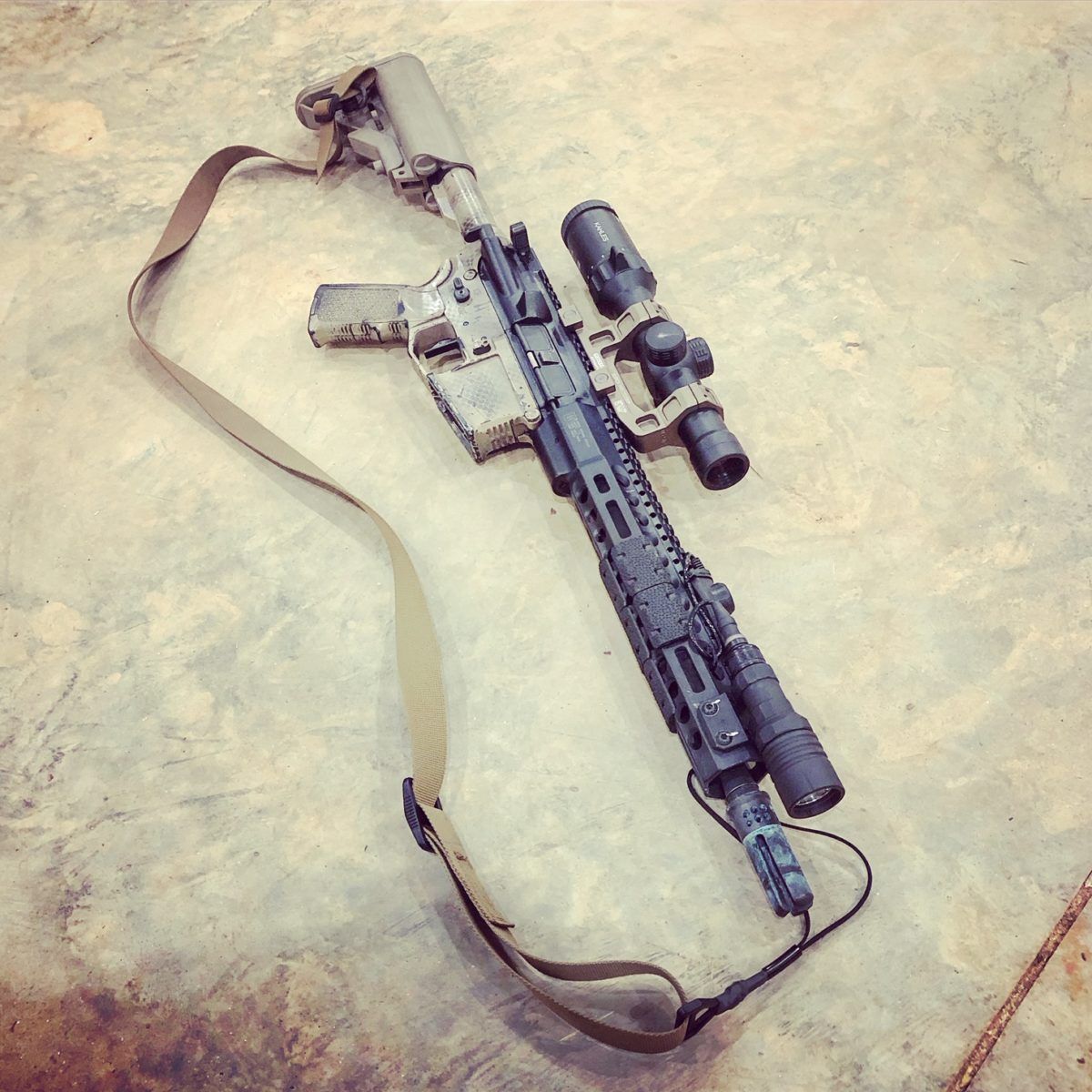
Now, if you are just dropping down to prone to shoot three shots at a 200-yard piece of steel and then get up and move, you will probably not notice anything, but if you’re going to stay there for a minute, it’s terrible.
Another issue for some shooters is understanding that offset will be different. Offset on the target is now changed and is greater. Because it is higher, you now have more work to know where your bullets are going to be hitting. Believe me, this matters when you are trying to do something precisely. You’d better know your offsets.
You mentioned cheek weld, so let’s talk about stocks. The stock height needs change when the optic height changes, in my opinion. (Editor’s note – relevant video below)
Then, let’s talk about parallax. When you are running an LPVO on a high mount, parallax is a thing, and cheek weld is the only real thing that helps mitigate it. We’re speaking strictly to LPVOs, as other optics like a 3-18 or a 5-25 usually have a parallax adjustment. LPVOs have a generally fixed parallax.
Parallax is when the reticle is in the center of the tube – when you move your eye around the tube, the reticle now moves around the target. People are conditioned not to think about this by red dots. Red dots are very close to being parallax-free. Folks used to red dots have never taken a shot with the dot on the side of the window, and totally missed what they were aiming at because they were doing it 50 yards or closer.
When you take an LPVO with a fixed parallax, throw it way up in the air on a high scope mount, and you take away the only thing that gives you the ability to consistently get behind it, which was the cheek weld…you now have a huge problem.
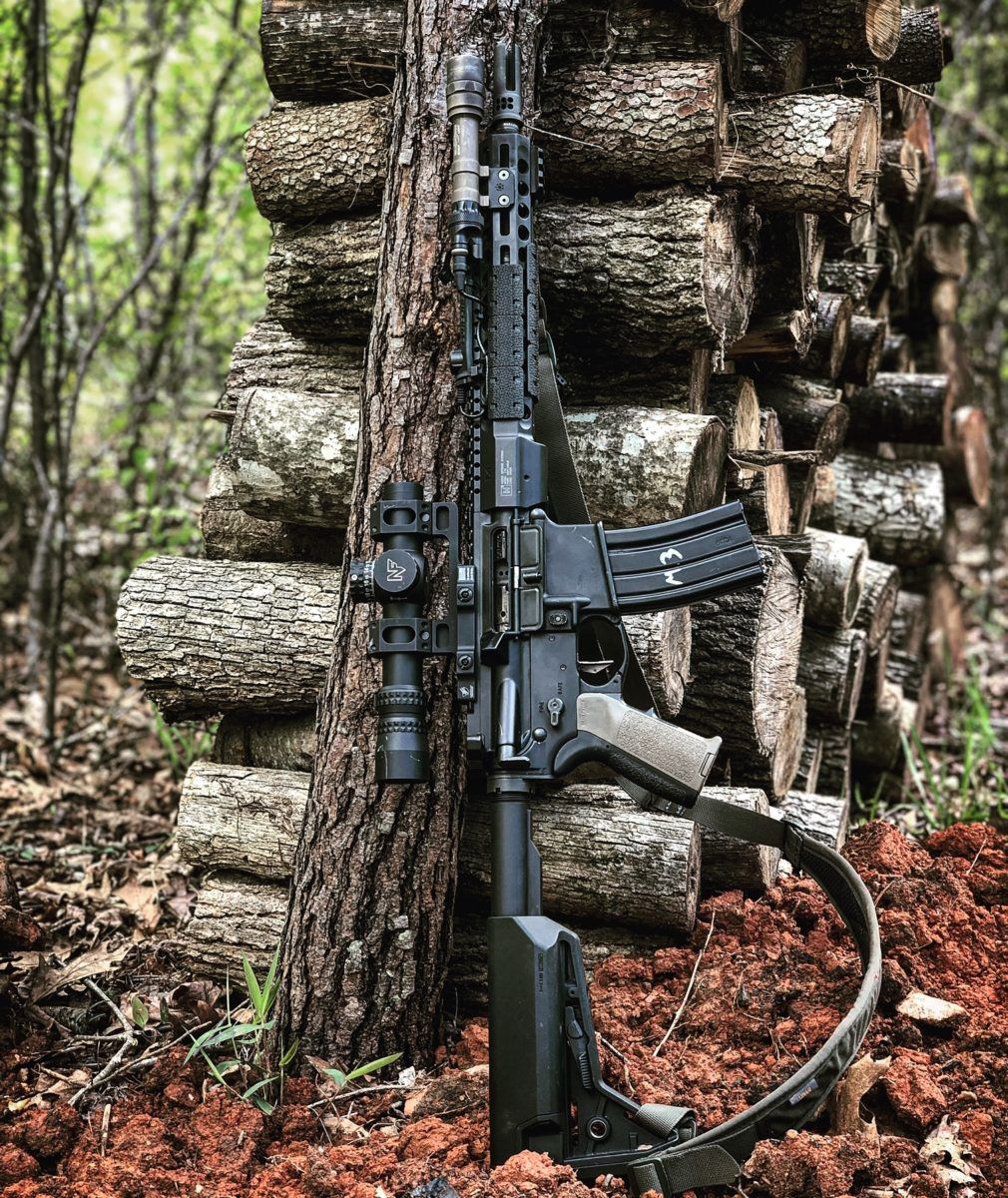
You cannot shoot fast and accurate and tell that the scope is centered, with a perfectly centered reticle, and a perfectly centered target, all at the same time. It’s tough and takes a lot of practice. I’m not even 100 percent sure you can do it efficiently. With a lower scope mount, you don’t have that issue. You just make sure that your cheek is in the same place every single time.
With the high scope mount, while you may be touching your face to the stock, it’s doubtful that your eyeball, due to your head’s pivoting nature, will be in the very same place that it was earlier.
You can tell this is happening when I get guys to shoot groups. I’ll have them shoot groups prone, from a bench, kneeling, from a barricade. What you’ll notice is the groups are decent, but they are in different spots every time. This is just at 100 yards. Imagine what’s happening at 600 yards. Good luck. I’m not saying it is impossible. I’ve done it. It’s just way more manageable when you have a cheek weld.
Q: Let’s talk about a red dot on a tall mount on something like a PDW. I’ve recently seen an Aimpoint T1 on a tall Reptilia mount… The red dot appeared lower and was no longer in the center of the tube when I was attempting a cheek weld. I’ve been told that can be an issue. Is this correct?
Mark Smith, JBS Training Group – Whoever told you that was technically correct. However, when you look at a realistic environment, you’re talking about a point of impact shift in the 3-4″ range in my experience. So, yes, it is a thing, but for most people, the environment that would have to present itself for that to be an issue is an unrealistic one.
I’ve not had that experience, but my fix for an off-center dot would be to simply pick my head up until the red dot was no longer low. You’re not getting a cheek weld worth a crap on those PDW stocks anyway, as such, I’m just going to pick my head up until the dot is in the center.
We really live in a world where people really dig into the details and over complicate stuff. It can be very easy to get into the weeds. I do my best to not get wrapped around the axel on things like that. If I had to run that setup, I would just raise my head and make it work.
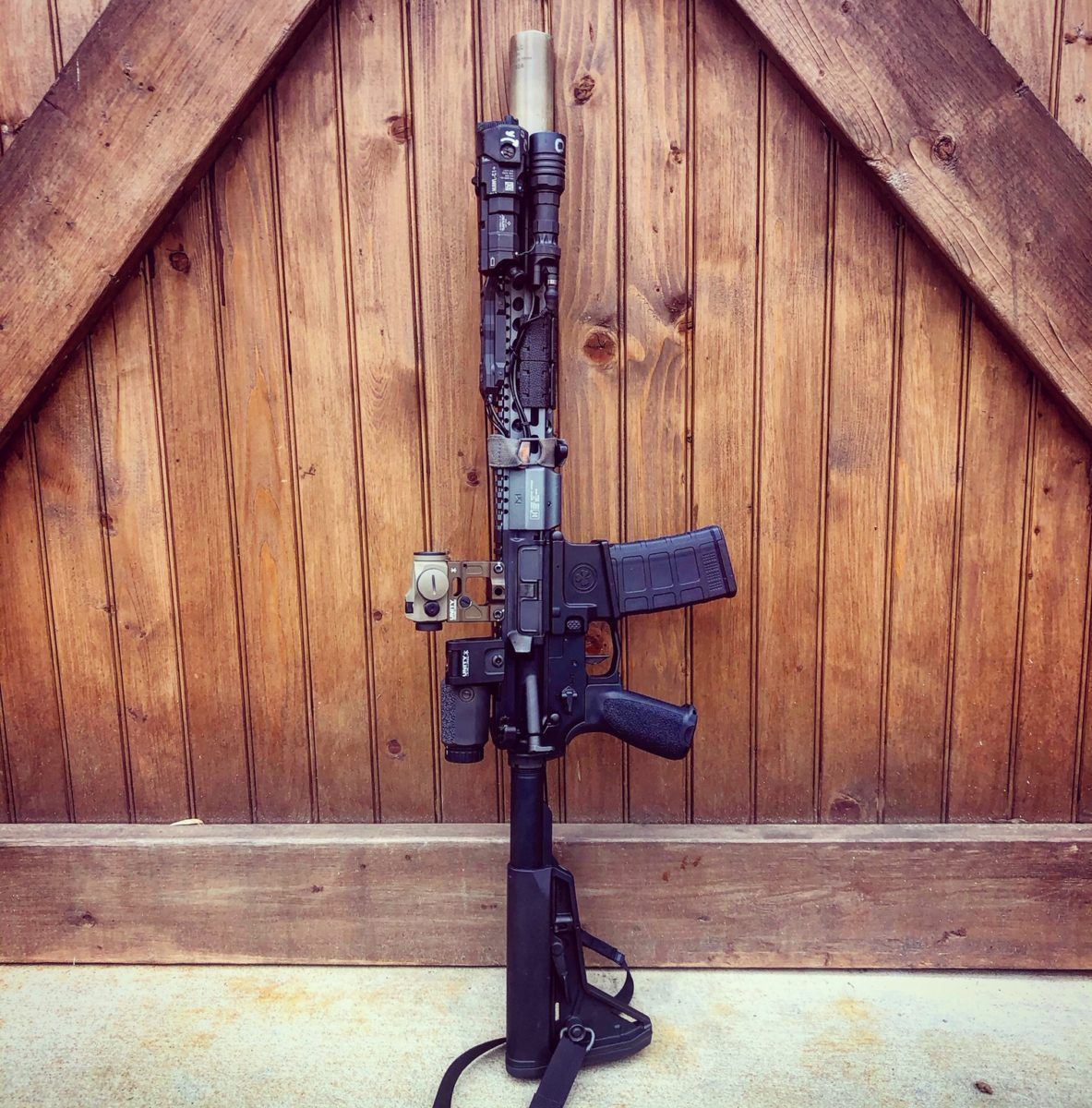
“My truck gun is a dot gun with a Unity FAST mount. I chose that particular mount because I really like their magnifier. That’s it. It’s a really subjective thing. It’s not that I’m right or wrong, it’s just what I do.”
Q: Are there any other disadvantages we should be aware of with a high scope mount?
Mark Smith, JBS Training Group – When it comes to all these cool VTAC walls that everybody runs, port opening shots can become more difficult with high mounted optics…Certain angles on specific ports may not be as easily done due to a taller mount.
Q: So, let’s say you have a rifle and a red dot. Do you go with a higher mount?
Mark Smith, JBS Training Group – All of my red dots are 1.93 or higher. For me, I have not found a downside. With a red dot, the parallax shift is so minimal that I cannot reproduce it on demand…If I were shooting a red dot at 500 yards, the mount height might matter, but if I’m being honest, my dot guns are 100 yards and in firearms.
My truck gun is a dot gun with a Unity FAST mount. I chose that particular mount because I really like their magnifier. That’s it. It’s a really subjective thing. It’s not that I’m right or wrong, it’s just what I do. It does not make it what you should do. If what you are willing to give up does not negatively affect you compared with what you have gained, then I don’t know why you are still searching.
If you can accomplish what you would like to do with your rifle with whatever mount that you have, then do it. You’re not necessarily going to gain something from running a high mount. A high scope mount isn’t going to magically transform you into being a better shooter.
Some guys run 1.93 mounts with LPVOs that absolutely slay with them. That’s because they have figured it out and worked through the downsides. They appreciate the upsides so much that they are willing to live with the disadvantages. That’s cool…but I don’t, because I’m me, not them. If you don’t like it, it doesn’t make you wrong, it just makes you an individual.
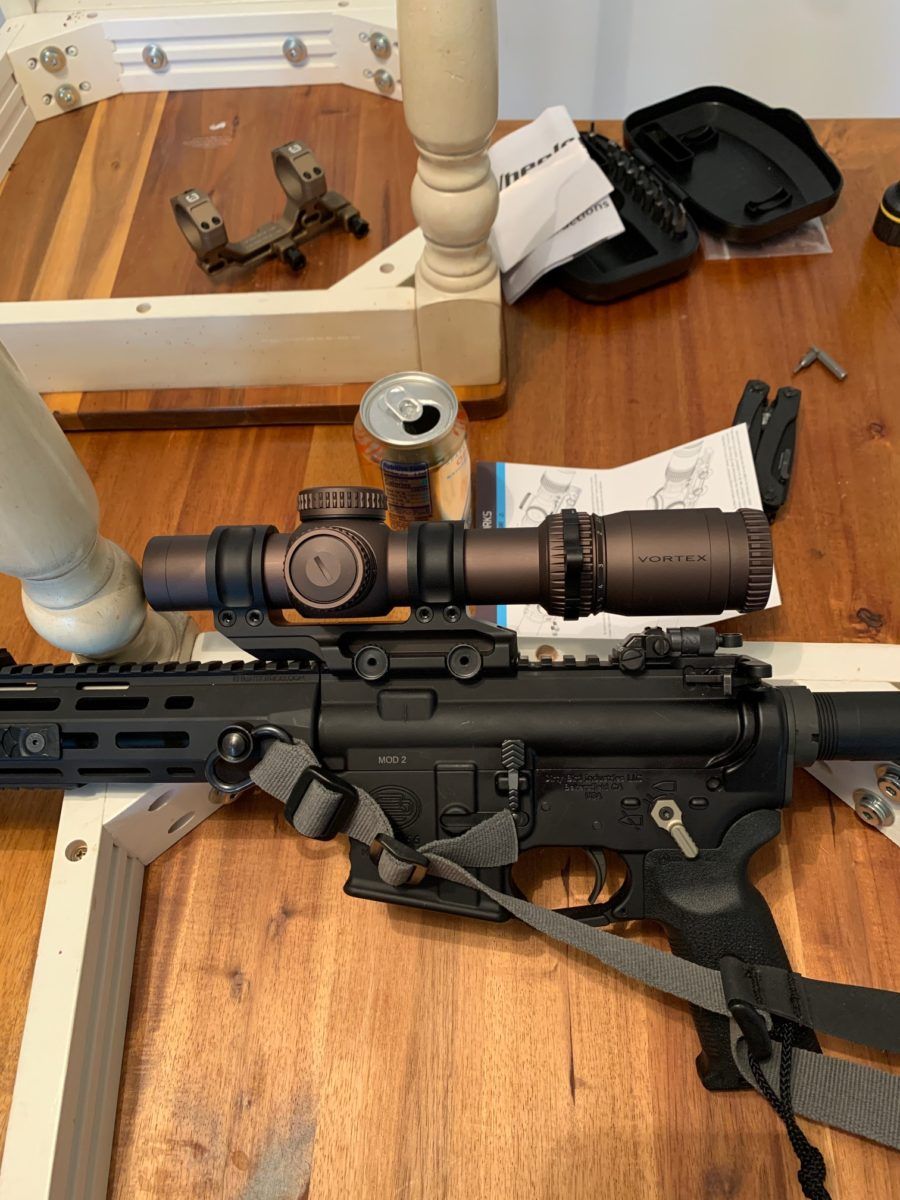
For my personal preference, dots are on high mounts because they are 100-yard and in. When I am shooting at that distance, I am doing so while on the move. I do a lot of critter and nuisance population control around here, and I am rarely standing still when I shoot at one of those things. I’m also using night vision. As such, those guns get dots and lasers. I believe guns should have specific roles. I also think that you should have one gun that can do almost anything if your budget allows.
On my 14.5″ gun with an LPVO that can do almost anything, I opt for a lower 1/3 mount. It gives me a little bit of heads up shooting, but I can still go prone with it without hurting my neck, and it’s close enough to the bore that I am not experiencing parallax deviation like I would with a higher mount.
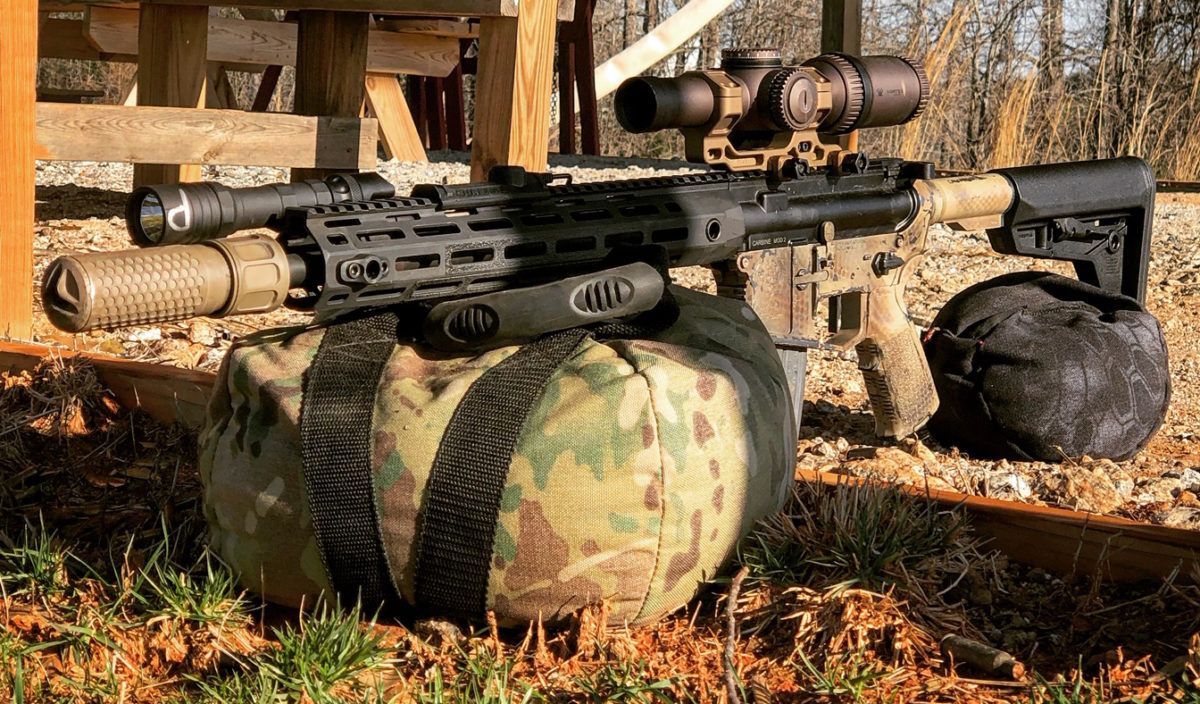
Q: Anything else you think we need to cover?
Mark Smith, JBS Training Group – People will spend an amazing amount of time trying to find out something like, “what is the best red dot height and why?” People will search for years trying to find the answer. They are looking for that one guy to say what they need to hear so they can know what to do. That is a fairy tale world. We are individuals. No one else can understand how your body likes to do things. If people would just go and shoot, they could answer a lot of the questions they have. I don’t mean shoot ten rounds…I mean, go and shoot and experience your weapon. You’ll begin to come to some realizations on what you prefer.
You’ll learn what’s right for you and be able to answer that vitally important question of “why?” That’s the difference between someone who shoots and someone who just buys parts. A person who shoots can tell you why they do things. Take the time to learn the “why” for yourself, and not just because you saw a cool picture of an AR on the internet.
Shoot, figure out what you like and why you like it. It’s that simple.
###
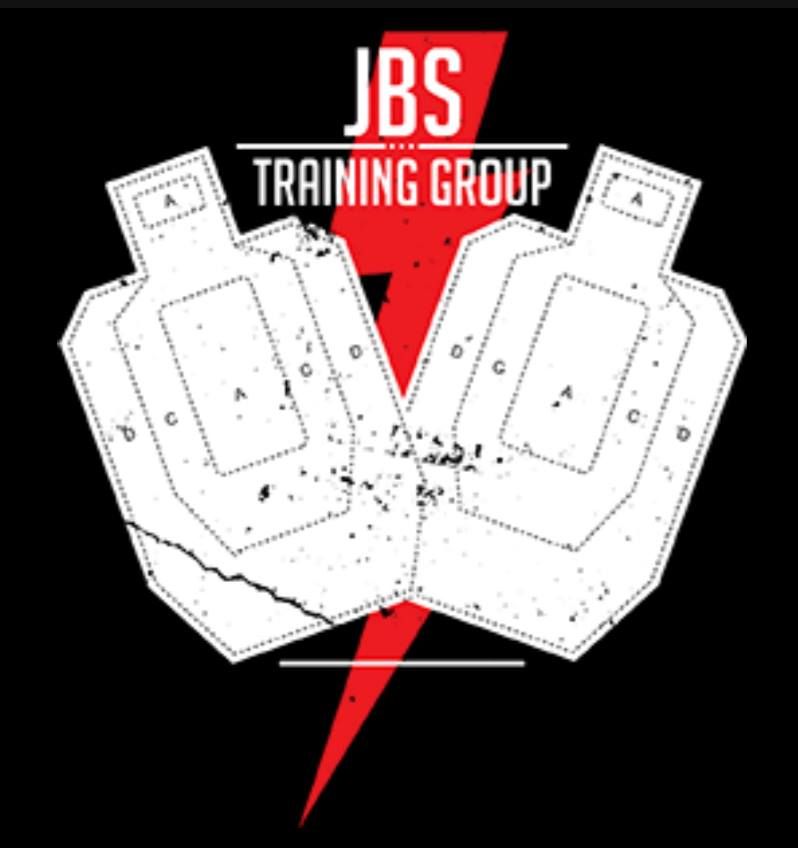


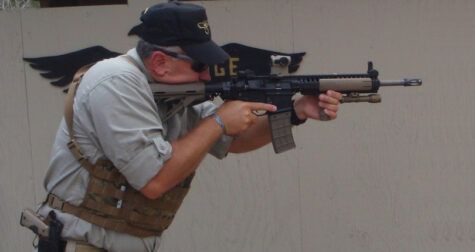
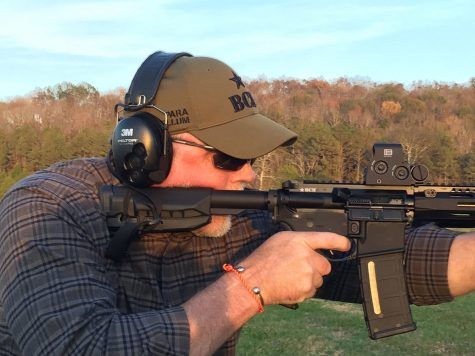


Any problems using a charging handle with cheek risers?
Depending on the stock, I think that could be an issue.